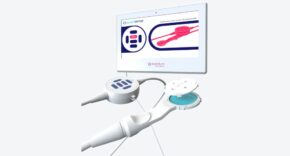
Dr Anas Nader, Co-Founder and CEO at Patchwork Health
Ask a clinician what they think of IT systems in healthcare and they will likely vent their frustrations about slow computers and ageing software. It’s a stark contrast to the rapid adoption of AI, large language models (LLMs), and machine learning tools being embraced right now across the private sector. You’d be forgiven for thinking that health institutions such as the NHS are destined to be left behind in this latest wave of innovation. However, whilst digital transformation within healthcare is not an easy undertaking, the current leaps forward the world is seeing across AI and machine learning hold huge promise for the sector. And capitalising on that potential isn’t a pipe dream.
In fact, the NHS could be the ideal place to see the true impact of these technologies at scale. Our health service collects vast amounts of operational and internal data every day, but it’s rarely joined up or truly capitalised upon. This creates critical information silos and represents a major missed opportunity for service improvement and task automation. But by tapping into technology which learns alongside us – so-called ‘machine’ learning – we can unlock the power of data and drive a new frontier for NHS efficiency and resourcing.
Streamlining complex data navigation
Machine learning – where systems autonomously learn and improve without explicit programming – could be a game-changer for the NHS. With every additional piece of data and feedback, a machine learning algorithm adjusts and enhances its functions (much like how a human learns through experience), giving people access to the insights derived from masses of meaningful data, while removing the complex manual administration required to unearth them.
The potential impact of this in a healthcare setting is massive. As the UK’s largest employer, the NHS sits on an absolute gold mine of operational data which, if properly harnessed, could be transformational. By integrating technologies like machine learning into existing systems, we can automate not just mundane, everyday tasks that suck up time, but also assist many complex decision making processes too. Machine learning can synthesise unfathomable quantities of data and process through an infinite number of variables; presenting humans with evidence-based insights that can aid their decision making and would otherwise be impossible for the human brain to achieve.
Unlocking this ‘data front door’ for NHS teams could remove guesswork and assumed knowledge from decision-making. It would automate certain processes and enhance others. It would allow busy, under-pressure staff to make data-driven decisions in a time-efficient, robust way. In short, it would give the brilliant brains of healthcare teams access to a new realm of power and potential; turbo-charging their capabilities.
Powering smarter, more sustainable staffing
One of the most impactful areas in which automated data retrieval could aid NHS teams is staffing. In most NHS trusts, rostering teams are still having to manually build and manage rotas. For lack of available alternatives, they are using their valuable time to hand-adjust schedules, grappling with departments to get sight of service plans, and accommodating staff-specific needs on a case-by-case basis. It’s vital, but painstaking work. And it can feel like there are no winners as managers and clinicians struggle to find equilibrium.
The added irony for hard-working resource teams is that the work they are doing is generating a constant stream of data which could be harnessed to transform the reality of their department, Trust, and even hospitals across the region. But its power is sitting dormant.
If healthcare teams could easily connect and use this data to their advantage, they would be able to optimise rotas based on true clinical demand and clinician preferences. They would be able to clearly predict staffing gaps, see the patterns that lead to pinch points, and understand the difference between a trend and a blip. The right tech tools, powered by machine learning, could also enable them to apply smarter logic to pay rates, automate the broadcasting of vacant shifts to temporary workers, instantly factor in staff preferences into work flows, and integrate service demand into forward planning. The benefits are endless.
And this level of nuance would be impossible for a human to replicate. The data is too vast and too ever-changing for a human brain to process. Leveraging fit-for-purpose, intelligent systems that speak to each other could create the ideal rota for a specific A&E department, one that’s completely bespoke to that team, hospital and region. By unlocking insights like this, via tools that capture the data and deliver the answers to teams in an efficient and functional way, we can create a new engine room for workforce planning and support the safe staffing of our wards.
Reaping whole-system benefits
Crucially, the automation of workforce data to drive more strategic, sustainable staffing wouldn’t just make life easier for rostering teams. Staff and patients would also benefit hugely.
Insights-powered staffing, supported by machine learning, could transform life for clinicians. They could say goodbye to receiving their rotas at short-notice and the laborious process of shift-swapping. They could have their individual needs, such as caring responsibilities or educational commitments, factored into their schedules; unlocking better work-life balance and new levels of empowerment. And, vitally, they could walk onto each shift and find the right balance of clinical colleagues by their side, in line with patient demand.
Organisations would be empowered to work more collaboratively within each ICS, easily sharing and comparing workforce data insights to drive improvements and unlock flexibility on a region-wide scale. Machine learning could hand managers the tools to predict future demand, plan staffing strategically and further in advance, ensure services are able to meet demand on any given day and improve continuity of care. And patients would benefit from the huge value delivered by happier, better-accommodated, and smartly rostered clinical teams.
These tools aren’t futuristic, they are already here. And whilst it’s no small challenge to integrate new systems into an organisation as complex as the NHS and unlock a new data-led and machine learning-powered approach, the value is immense. NHS staff, clinicians and patients deserve the smart, integrated future that these technologies could bring.











